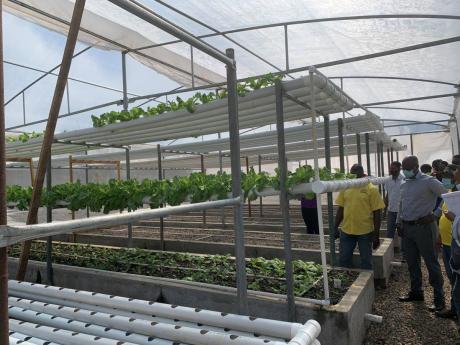Earth Today | Aquaponics taking off at College of Agriculture, Science and Education
AQUAPONICS is gaining traction at the College of Agriculture, Science and Education (CASE), where students are exposed to the farming method that combines aquaculture, or fish farming, with hydroponics, or crop production without soil, to boost yields.
CASE initially received a grant from the Environmental Foundation of Jamaica, through the Adaptation Programme and Financing Mechanism (AP &FM) for the Pilot Programme for Climate Resilience, to build the aquaponics system. The aquaponics farm now enables practical experience for students studying agriculture at the institution ,while also boosting income earning for the institution.
Markland Murphy, director of projects and research coordinator at CASE, explained that the institution had maximised the use of the space for the aquaponics farm by adding pipes to assist with growing more produce, in addition to the regular farm beds.
The technique seems to be working and Murphy is anticipating being able to supply 7,000 pounds of lettuce every four weeks, if things go according to plan. The CASE team is already talking with several potential buyers for the produce.
Aquaponics, which is seen as a climate-smart agricultural practice, has been known to boosts crop production up to 10 times higher than traditionally cultivated plots of equivalent size. It uses 85 per cent to 90 per cent less water and no chemical fertilisers or pesticides. It is low-energy consumption, providing year-round crop production and uses much less labour than traditional farming.
The aquaponics system is a part of the activities undertaken under the AP&FM to help to reduce Jamaica’s vulnerability to climate change. The AP&FM receives funding from the Inter-American Development Bank through the Climate Investment Funds.


